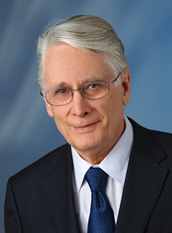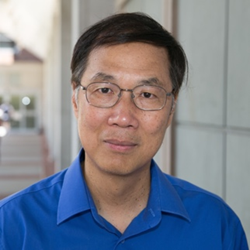报告题目:Morphogenetically active amorphous polyphosphate nanoparticles: A foundational breakthrough invention for personalized and regenerative medicine
报告人: Werner E. G. Müller院士
报告时间:2020年1月6日9:30-10:30
报告地点:华南理工大学大学城校区B2一楼会议室
报告人简介:
Werner E. G. Müller,生物学博士,德国约翰尼斯-古腾堡美因茨大学教授,德国埃尔富特科学院院士和参议员,克罗地亚科学院院士,国际海洋生物技术协会前主席。近年来主要从事生物学、生物化学以及生物材料在医学领域的应用研究工作,与国内多家大学和研究机构建立有长期友好的合作关系。他因其研究成果卓著而荣获近20项德国国内和国际科学大奖,其中包括德国最高个人奖项——“德国联邦十字奖章(一级)”和中国国家外专局“友谊奖”。他还是“欧盟研究委员会(ERC)”资深研究项目(Advanced Investigator Grant)获资助者和“国际人类前沿科学计划(International Human Frontier Science Program)”资助项目的获得者。发表国际SCI 收录论文1200多篇,其中包括“Nature”2篇,“Cell”2篇,“Chemical Riviews”2篇和“Cancer Research”10多篇;出版专著近20部;Hirsch 因子达到84(ISI Web of Science);以第一发明人获发明专利20 多项(DEPATISnet – Data base: 226 hits)。
Prof. Werner E. G. Müller is the Senator and the Academician of the Erfurt Academy of Sciences (Germany), as well as the Academician of the Croatian Academy of molecular biology, (bio)chemistry and tissue engineering. Based on his research achievements, he has been awarded with one ERC Advanced Investigator Grant and three ERC Proof of Concept Grants in the field of enzyme-based biomineralization and regenerative medicine. He was also a recipient of a grant in the frame of the International Human Frontier Science Program. His work had been recognized by more than 20 national and international scientific awards, including the highest award from Germany “German Federal Cross Medal; 1st class” and the “Friendship Award” from China. He has more than 1,200 publications (Hirsch-index: 84; ISI Web of Science), 21 granted patents and 15 patent applications [DEPATISnet – Data base: 226 hits].

报告题目:微流控技术可以解决纳米疗法中生物制造的问题吗?
Can microfluidic solve the problems in biomanufacturing-based nanotherapeutics.
报告人:Kam W. Leong院士
报告时间:2020年1月6日10:30-11:30
报告地点:华南理工大学大学城校区B2一楼会议室
报告人简介:
Kam W. Leong is the Samuel Y. Sheng Professor of Biomedical Engineering at Columbia University. He received his PhD in Chemical Engineering from the University of Pennsylvania. After serving as a faculty in the Department of Biomedical Engineering at The Johns Hopkins School of Medicine for almost 20 years, he moved to Duke University in 2006 to study the interactions of cells with nanostructures for therapeutic applications. After moving to Columbia University in September 2014, he continues to work on nanoparticle-mediated nonviral gene delivery and immunotherapy. He also works on the application of nanostructured biomaterials for regenerative medicine, particularly on understanding cell-topography interactions and on the application of nonviral vectors for direct cellular reprogramming and genome editing. He has published ~330 peer-reviewed research manuscripts with >39,000 citations, an h-index of 103, and holds more than 50 issued patents. His work has been recognized by a Young Investigator Research Achievement Award of the Controlled Release Society, Distinguished Scientist Award of the International Journal of Nanomedicine, Clemson Award for Applied Research of the Society for Biomaterials, and Life Time Achievement Award of the Chinese American Society of Nanomedicine and Nanotechnology. He is the Editor-in-Chief of Biomaterials, a member of the USA National Academy of Inventors, and a member of the USA National Academy of Engineering.

